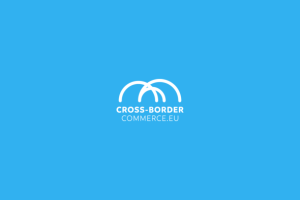24% of ecommerce in Europe is cross-border

The total online cross-border market (excluding travel) in Europe represented a turnover of 108.75 billion euros in 2019. This is an increase of 14.4 percent compared to the situation one year before. The cross-border share represents 23.55 percent of total online sales in Europe, which is similar to the situation last year.
The cross-border share of total ecommerce in Europe is only slightly higher than it was last year. Back then, it was 22.8 percent, now it’s 23.55 percent. And most of the cross-border trade in Europe (55 percent) is generated by players from within the European Union. Their market share has increased by 3 percent compared to 2018.
Cross-border accounts for 23.55% of total online sales in Europe.
The numbers come from Cross-Border Commerce Europe, which has made a list of the strongest ecommerce companies in Europe with a focus on cross-border performance. This year, Ikea Group takes the leading position in the TOP 500 Cross-Border Retail Europe. The Swedish furniture retailer generated a cross-border revenue of 4.6 billion euros in 2019.
New top 10
Compared to the top 10 of last year, there are some significant changes. Lego, C&A, Smyths Toys and TomTom entered the list, while Pandora, Thomann, Jack & Jones and Swarovski dropped in the rankings.
| # | Cross-border retailer |
| 1 | Ikea |
| 2 | H&M |
| 3 | Zara |
| 4 | Lego |
| 5 | Nespresso |
| 6 | C&A |
| 7 | Zalando |
| 8 | Vivino |
| 9 | Smyths Toys |
| 10 | TomTom |
How the top 500 is calculated
Cross-Border Commerce Europe started its top 500 of the strongest cross-border companies last year. It ranks the ecommerce players by weighting four factors: the amount of online cross-border sales in Europe (16 countries within Western Europe and Scandinavia), SEO-indicators covering cross-border performance, a cross-border score determined on the amount of active countries and the amount and percentage of cross-border visitors.
And then there are also some other parameters that fine-tune the ranking, as the organization puts it. These are: brand authority, organic search percentage, number of languages, currencies and payments methods, and the local supply availability (transport and stock services).

A note with regards to the study: when the researchers talk about ‘Europe’, they mostly refer to the countries within Western Europe and Scandinavia, called EU16.

Comments